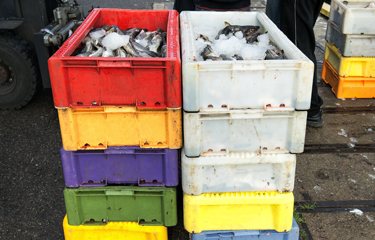While the Barents Sea cod stock numbers continue to be at a historically high level, in recognition of a decline in certain areas, Norwegian and Russian authorities have agreed on a significantly lower catch limit for 2022.
The new Norwegian-Russian fisheries agreement, with this year’s negotiations conducted virtually, sets the total quota for Northeast Arctic cod at 708,480 metric tons (MT) for 2022, down from the 885,600 MT agreed for this year.
The quota is in line with the advice given to the Joint Norwegian–Russian Fisheries Commission (JRNFC) by the International Council for the Exploration of the Seas (ICES) earlier in the year.
“The agreement we have entered into with Russia today gives both the Norwegian and the Russian fishing industry good conditions for sustainable and profitable fishing in 2022,” Norway Minister of Fisheries and Maritime Affairs Bjørnar Skjæran said. “Norway and Russia agree that we must have an ocean management in the High North that is both long-term and sustainable so that we take care of the world's largest cod stock and the other species in the Barents Sea. The most important stocks in the High North are in a certain decline, but thanks to good cooperation over many years, Norway and Russia have reached an agreement that is biologically sustainable.”
With the total cod quota distributed between Norway, Russia, and third countries according to the same pattern as in previous years. Norway's quota for 2022 will be 321,605 MT.
For Norway, an additional transfer access of an unused quota of cod has been agreed from 2021 to 2022, so that the transfer access as a one-off case has been increased from 10 percent to 15 percent, with the Norwegian ministry stating that challenges brought to the fishing industry by the COVID-19 pandemic led to the move. The Norwegian Directorate of Fisheries will present a proposal for how this should be handled in the national regulations at the regulatory meeting on 9 and 10 November.
The JRNFC, which has set the Barents Sea fishing quotas since 1976, also agreed that the total quota for haddock in 2022 will be 178,532 MT. Of this, Norway's quota will be 88,130 MT. The haddock limit for 2021 was 232,537 MT.
Again, the new quota has been set in line with ICES’ scientific advice. It was also decided to open the capelin fishery in 2022, with a total quota of 70,000 MT, with the Norwegian share amounting to 41,950 MT. This is the first time that capelin fishing has been opened since 2018.
Meanwhile, the total 2022 quota for blue halibut is set at 25,000 MT (down from 25,000 MT in 2021), with Norway having a 12,975 MT share.
In the meeting, the two parties also agreed to start work on a management plan for shrimp.
Photo courtesy of Jan Miko/Shutterstock







